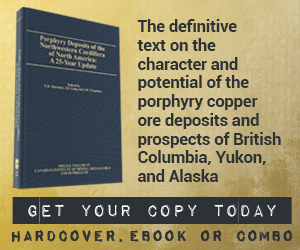Library Magazine Articles Knowing the tools at your disposal: Commodity-specific guidelines available to QPs
Knowing the tools at your disposal: Commodity-specific guidelines available to QPs
Craig Waldie and Jim Whyte - Mar 2010
National Instrument 43-101 (NI 43-101) sets standards for the disclosure of scientific and technical information containing facts, context and balance, and cautions investors and their advisers on the need to make an informed investment decision.
However, NI 43-101 does not regulate the procedures or practices used to collect, analyze or interpret this information — it places the responsibility of doing so upon the qualified person (QP). The QP should ensure that practices followed are based on methodology that is generally accepted in the industry.
Industry best practice guidelines covering specific commodities available on CIM’s website currently include: Guidelines for Reporting of Diamond Exploration Results (March 9, 2003); Estimation of Mineral Resources and Mineral Reserves Best Practice Guidelines — Potash, Industrial Minerals, Coal and Uranium (November 23, 2003); and Estimation of Mineral Resources and Mineral Reserves Best Practice Guidelines — Rock Hosted Diamonds (May 4, 2008).
The general “Best Practice Guidelines” (November 2003) for estimating mineral resources and mineral reserves, and the “Exploration Best Practice Guidelines” (August 2000, available on CIM’s website) are applicable to all commodities. However, the specific nature and characteristics of certain minerals can make additional guidance necessary, and CIM has provided that in its Commodity-Specific Guidelines section of the Estimation of Mineral Resources and Mineral Reserves Best Practice Guidelines. QPs are directed to the original documentation for complete information.
Potash — The grade and thickness of many potash deposits are remarkably consistent over many tens of kilometres. One notable issue with potash is almost the inverse of the situation for other mineral deposits—much of the exploration effort goes to defining the location and size of the non-mineable areas in an otherwise contiguous mineral resource.
Industrial minerals — Industrial mineral deposits differ from metallic mineral deposits as their economic viability is related to marketing factors. Also, their mineral characteristics must meet the demands of the market. The economic viability of an industrial mineral deposit is significantly affected by factors such as the particular physical, chemical and quality characteristics of the mineral, the size and concentration of the market and transportation costs.
Coal — The coal industry has, over time, developed its own set of definitions, concepts and parameters. Geological Survey of Canada Paper 88-21, “A Standardized Coal Resource/ Reserve Reporting System for Canada,” facilitates the consistent categorization of coal deposits found in varied depositional and tectonic regimes. QPs must be aware that GSC Paper 88-21 includes mineral resource categories that are different from those of the CIM Standards required by section 2.2(a) of NI 43-101.
Uranium — Uranium deposits have unique characteristics such as their radioactive nature and, in some cases, their amenability to in situ leach (ISL) mining. QPs must be familiar with the radioactive character of uranium, thorium and potassium minerals, and radioactive decay series that result in various uranium isotopes and other daughter products. There are terms specific to uranium deposits (like disequilibrium, equivalent assay and K Factor) that the QP must properly understand. The QP should also know the specialized equipment and techniques used for acquiring radiometric data.
Rock-hosted diamonds — Diamonds, like industrial minerals, do not have a set price and their value is related to the specific physical charteristics of the diamond and the recoverability of large marketable stones. Often the tonnage estimate for the host kimberlite can be determined long before the grade. Most importantly, the average value per carat — the critical component for assessing a diamond project’s economic potential — is not well known until several thousand carats have been valued.
Although NI 43-101 does not specifically mandate the QP to follow CIM best practices guidelines and commodity-specific guidance, regulators generally take the view that in almost all cases, QPs, acting in compliance with the professional standards of competence and ethics established by their professional association, will use the procedures and methodologies that are consistent with industry standards and the best practices established by CIM or similar organizations in other jurisdictions.
Authors
Craig Waldie and Jim Whyte are both senior geologists with the Ontario Securities Commission, and are responsible for NI 43-101 compliance reviews of prospectuses, technical reports and other regulatory filings of Ontario-based mining companies.

.png)
